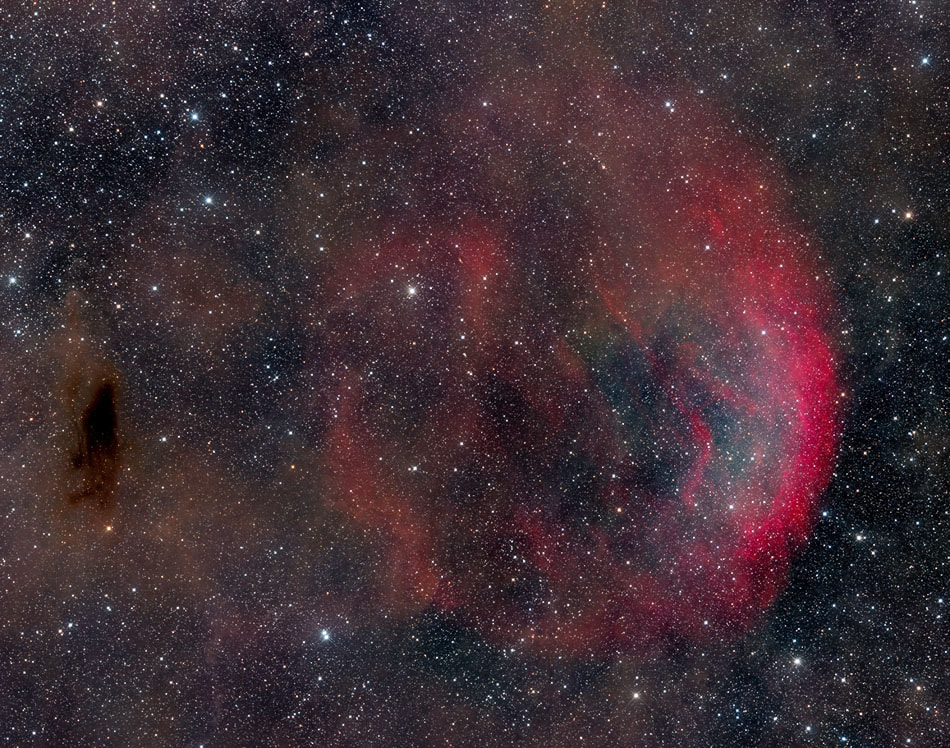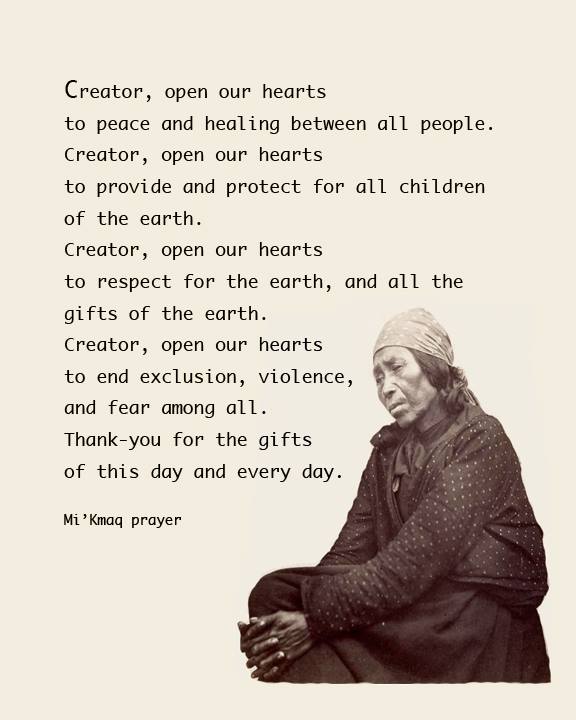Blog
The Helix Nebula (also known as NGC 7293 or Caldwell 63) is a planetary nebula(PN) located in the constellation Aquarius. Discovered by Karl Ludwig Harding, most likely before 1824, this object is one of the closest of all the bright planetary nebulae to Earth. The distance, measured by the Gaia mission, is 655±13 light-years. It is similar in appearance to the Cat’s Eye Nebula and the Ring Nebula, whose size, age, and physical characteristics are similar to the Dumbbell Nebula, varying only in its relative proximity and the appearance from the equatorial viewing angle. The Helix Nebula has sometimes been referred to as the “Eye of God” in pop culture, as well as the “Eye of Sauron“. 650 ly distant. Pic Adam Block.

Wild Bill Davis (November 24, 1918 – August 17, 1995 Glasgow, Mo) was the stage name of American jazz pianist, organist, and arranger William Strethen Davis. He is best known for his pioneering jazz electric organ recordings and for his tenure with the Tympany Five, the backing group for Louis Jordan. Prior to the emergence of Jimmy Smith in 1956, Davis (whom Smith had reportedly first seen playing organ in the 1930s) was the pacesetter among organists.
more...Theodore Shaw Wilson (November 24, 1912 – July 31, 1986 Austin, TX) was an American jazzpianist. Described by critic Scott Yanow as “the definitive swing pianist”, Wilson’s piano style was gentle, elegant, and virtuosic. His style was highly influenced by Earl Hines and Art Tatum. His work was featured on the records of many of the biggest names in jazz, including Louis Armstrong, Lena Horne, Benny Goodman, Billie Holiday, and Ella Fitzgerald. With Goodman, he was one of the first black musicians to perform prominently alongside white musicians. In addition to his extensive work as a sideman, Wilson also led his own groups and recording sessions from the late 1920s to the 1980s.
more...Scott Joplin (November 24, 1868 – April 1, 1917 Texarkana, TX ) was an American composer and pianist. Dubbed the “King of Ragtime“, he composed more than 40 ragtime pieces,one ragtime ballet, and two operas. One of his first and most popular pieces, the “Maple Leaf Rag“, became the genre’s first and most influential hit, later being recognized as the quintessential rag. Joplin considered ragtime to be a form of classical musicmeant to be played in concert halls and largely disdained the performance of ragtime as honky tonk music most common in saloons.
Joplin grew up in a musical family of railway laborers in Texarkana, Texas. During the late 1880s, he traveled the American South as a musician. He went to Chicago for the World’s Fair of 1893, which helped make ragtime a national craze by 1897. Joplin moved to Sedalia, Missouri, in 1894 and worked as a piano teacher. He began publishing music in 1895, and his “Maple Leaf Rag” in 1899 brought him fame and eventually a steady income. In 1901, Joplin moved to St. Louis and two years later scored his first opera, A Guest of Honor. It was confiscated—along with his belongings—for non-payment of bills and is now considered lost. In 1907, Joplin moved to New York City to (unsuccessfully) find a producer for a new opera. In 1916, Joplin descended into dementia from neurosyphilis. His 1917 death marks the end of the ragtime era.
Joplin’s music was rediscovered and returned to popularity in the early 1970s with the release of a million-selling album recorded by Joshua Rifkin. This was followed by the Academy Award–winning 1973 film The Sting, which featured several of Joplin’s compositions. Treemonisha, his second opera, was produced in 1972 and in 1976 Joplin was awarded a Pulitzer Prize. By 1916, Joplin had developed tertiary syphilis,[51][52] but more specifically it was likely neurosyphilis. On February 2, 1917, he was admitted to Manhattan State Hospital, a mental institution.[53] The “King of Ragtime” died there on April 1 of syphilitic dementia at the age of 48.
more...Sh2-216 is a planetary nebula visible in the constellation of Perseus.
It is located in the easternmost part of the constellation, about 5° west of the bright Capella; it appears as a faint gaseous filament that is difficult to observe due to its weak luminosity. Its observation requires powerful and sensitive instruments and in long exposure photos it barely emerges from the background star field. Its declination is moderately northern, therefore its observation is considerably facilitated for observers located at northern latitudes; south of the equator, however, it can be easily observed only up to the lower temperate regions.
With a distance of just 129 parsecs (about 420 light years), it is the closest planetary nebula to the solar system; the great dispersion of its gases, which also makes it the largest planetary nebula observable in the celestial vault, is due to the great age of the cloud, estimated at around 600,000 years. It was initially catalogued as an H II region, although the star responsible for the ionisation of the gases had not been identified; later, through spectrometric studies, the hypothesis was advanced that the cloud could be the remains of a very ancient planetary nebula with an extremely reduced expansion velocity, a hypothesis later confirmed thanks to the discovery of the central star, a white dwarf catalogued as LSV+46°21, in an off-centre position in an eastward direction. The surface temperature of the white dwarf is between 50,000 and 90,000 kelvin

Celin Romero (born November 23, 1936, in Málaga) is a classical guitarist and member of the guitar quartet the Romeros. He is the eldest son of Celedonio Romero,who in 1957 left Spain for the United States with his family.
On February 11, 2000, at the USC Thornton School of Music, he and his brothers, Pepeand Angel, were each presented with the Grand Cross of Isabel la Catolica (the highest honour that can be offered in Spain), and were knighted for their musical accomplishments; the ceremony included a gala performance by The Romeros and the Thornton Chamber Orchestra.
In addition to his busy concert schedule, Romero is Professor of Music and Guitar at the University of California, San Diego.
more...Ludovico Maria Enrico Einaudi OMRI (born 23 November 1955) is an Italian pianist and composer. Trained at the Conservatorio Verdiin Milan, Einaudi began his career as a classical composer, later incorporating other styles and genres such as pop, rock, folk, and world music.
Einaudi has composed the scores for a number of films and television productions, including This Is England, The Intouchables, I’m Still Here, the TV miniseries Doctor Zhivago, and Acquario (1996), for which he won the Grolla d’oro. His music was used as the score for the Golden Globe and Academy Award-winning films Nomadland and The Father.
He has also released a number of solo albums for piano and other instruments, notably I Giorni in 2001, Nightbook in 2009, and In a Time Lapse in 2013. On 1 March 2019, Einaudi announced a seven-part project named Seven Days Walking, which was released over the course of seven months in 2019.
In 2005, he was appointed an Officer of the Order of Merit of the Italian Republic.
more...R. L. Burnside (November 23, 1926 – September 1, 2005 Harmontown, MS) was an American bluessinger, songwriter and guitarist. He played music for much of his life but received little recognition before the early 1990s. In the latter half of that decade, Burnside recorded and toured with Jon Spencer, garnering crossover appeal and introducing his music to a new fan base in the punk and garage rock scenes. e played the harmonica and dabbled with playing guitar, beginning at the age of 16. He said he first played in public at age 21 or 22. He learned mostly from Mississippi Fred McDowell, who had lived near Burnside since Burnside was a child. He first heard McDowell playing at age 7 or 8 and eventually joined his gigs to play a late set. Other local teachers were his wife’s brother, his uncle-in-law Ranie Burnette, who was a popular player from Senatobia, the mostly unknown Henry Harden, Son Hibbler, Jesse Vortis, and possibly Stonewall Mays. Burnside cited church singing and fife-and-drum picnics as elements of his childhood’s musical landscape, and he credited Muddy Waters, Lightnin’ Hopkins, and John Lee Hooker as influences in adulthood.
more...Ray Drummond (born November 23, 1946, in Brookline, Massachusetts) is an American jazzbassist and teacher. He also has an MBA from Stanford University, hence his linkage to the Stanford Jazz Workshop. He can be heard on hundreds of albums and co-leads The Drummondswith Renee Rosnes and (not related) Billy Drummond.
Drummond has been a resident of Teaneck, New Jersey, since 1980 with his wife, Susan, and his daughter, Maya.
He is the elder brother of David Drummond, who served as senior vice president, corporate development and chief legal officer of Google Inc., until his retirement in 2020.
more...Perry Miller (born November 22, 1941), known professionally as Jesse Colin Young, is an American singer and songwriter. He was a founding member and lead singer of the 1960s group the Youngbloods. After their dissolution in 1972, Young embarked on a solo career, releasing a series of albums through Warner Bros. Records, including Song for Juli (1973), Light Shine (1974), Songbird (1975) and the live album On the Road (1976). Young continued to release music in the 1980s with Elektra Records and Cypress Records, before deciding to release music through his personal label, Ridgetop Music, in 1993. After the Mount Vision Fire in 1995, Young relocated with his family to a coffee plantation in Hawaii, periodically releasing music. Young received a diagnosis of “chronic Lyme disease” in 2012, and decided to retire from music. He began performing again in 2016 with his son Tristan, releasing a new album Dreamers in 2019 through BMG.
Young’s song “Sunlight” was covered by Three Dog Night on their album Naturally(1970), and “Darkness, Darkness” by Robert Plant in 2002, which received a nomination for the Grammy Award for Best Male Rock Vocal Performance.
more...
Shabbat for the Soul service at Mt Zion Friday November 22 2024 630pm: with the Installation of Rabbi Renetzky. Music with Jennifer Strauss-Klein, Tami Morse, mick laBriola and more.
more...Braided and serpentine filaments of glowing gas suggest this nebula’s popular name, The Medusa Nebula. Also known as Abell 21, this Medusa is an old planetary nebula some 1,500 light-years away in the constellation Gemini. Like its mythological namesake, the nebula is associated with a dramatic transformation. The planetary nebula phase represents a final stage in the evolution of low mass stars like the sun as they transform themselves from red giants to hot white dwarf stars and in the process shrug off their outer layers. Ultraviolet radiation from the hot star powers the nebular glow. The Medusa’s transforming star is the faint one near the center of the overall bright crescent shape. In this deep telescopic view, fainter filaments clearly extend below and to the left. The Medusa Nebula is estimated to be over 4 light-years across.

Aston Francis Barrett, CD (22 November 1946 – 3 February 2024), often called “Family Man” or “Fams” for short, was a Jamaican musician and Rastafarian. He was best known as the bandleader of Bob Marley‘s backing band, as well as co-producer of the albums, and the man in charge of the overall song arrangements. In 2006 Barrett filed a lawsuit against Island Records, the Wailers’ label, seeking £60 million in unpaid royalties allegedly due him and his now deceased brother. The lawsuit was dismissed. The arguments by Island-Universal and the Marley family was that Barrett surrendered his rights to any further royalties in a 1994 settlement in exchange for several hundred thousand dollars. The judge agreed. As a result he faced about £2 million in legal costs for the trial, forcing him to sell two homes in Jamaica. Bass Player magazine has commented that “Perhaps no music evokes the notion of bass and bass tone like reggae and dub, and no two words are more synonymous with those plucking practices than Family Man.” Ali Campbell, frontman of UB40, credits Aston Barrett and his brother as the inventors of reggae as we know it, stating, “That all happened before reggae, which kind of happened in about ’69, you know, when reggae as we know it was invented by the Barrett brothers, I’d say.” Rock musician John Lennon expressed admiration for the unique bass sound originating from Jamaica, while discussing his plans for a comeback album in early 1980 while listening to the Bob Marley & The Wailers album Burnin’, stating, “You couldn’t get that sound in New York. No way!
more...More Posts
- Buffy Sainte-Marie Day
- Nancy Wilson Day
- Oscar Aleman Day
- World Music with Wu Fei
- Daily Roots with Cornell Campbell
- The Cosmos with UGC 12591
- David Murray Day
- Smokey Robinson Day
- Louis “Kid Shots” Madison Day
- Jacques de Saint-Luc Day
- World Music with Chogo Prudente
- Daily Roots with Delroy Wilson
- The Cosmos with NGC 2174
- Randy Crawford Day
- Buddy Cage Memorial
- Irma Thomas Day
- De De Pierce Day
- World Music with Fatoumata Diwara
- Daily Roots with Dawn Penn
- Happy Presidents Day 2020

